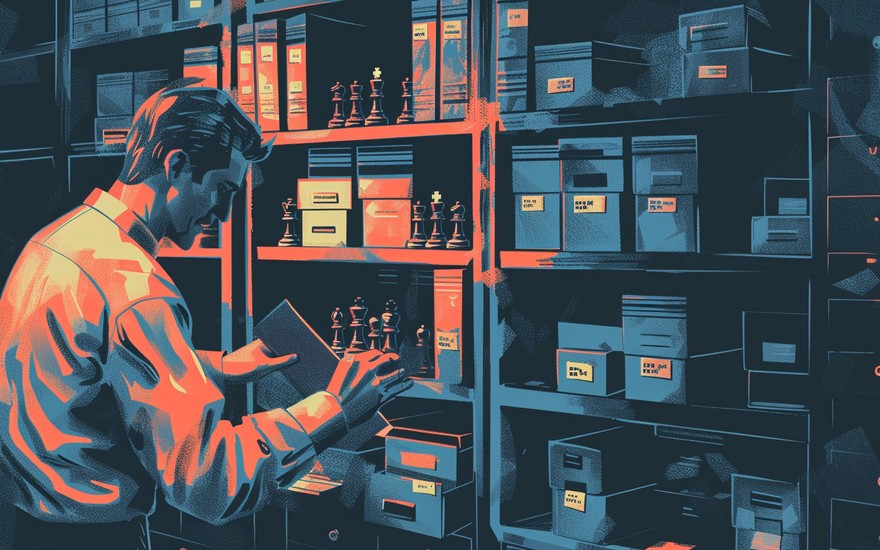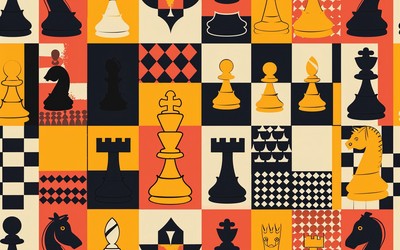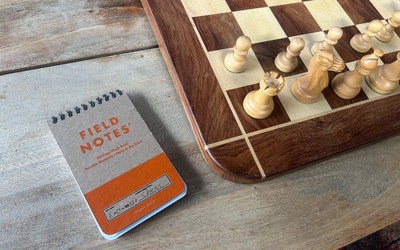
Midjourney
Comparing Lichess and Chessbase
Do not try this at home!I recently decided to make a big change in how I save my opening files, going from using Lichess studies, to Chessbase databases. This is a painful change, because I love Lichess and I hate Chessbase, but Chessbase has a few key features that make the change worth it for me.
The rest of this post is all about how to organize opening files, but long story short, I decided that as a chess coach I need to have files on a lot of different openings, and I need a good way to search them to find what I need.
But your needs as a (probably) amateur chess player are a lot different than my needs as a chess coach, and on just about every detail of opening file management, I’d recommend you do the opposite of what I’m doing. Let’s go through them point-by-point.
Platform
Where do you save your opening files?
What I do
The big change that prompted me to write this post is that I decided to switch from Lichess to Chessbase for managing my opening files. The biggest issue is organization and searchability.
While I love Lichess studies, they’re difficult to organize, and almost impossible to search. My opening files are mixed in with game reviews, thematic lessons, and a bunch of random studies it would take too long to delete. If I want to check my notes on a position or variation but can’t remember where they are, there’s no way to search all my studies for it.
With Chessbase, the files are in local storage, so I can organize them into directories and subdirectories if I want to. And I can easily search for a position, or even parts of a position, like a specific pawn structure.
What you should do
I still recommend Lichess studies for amateur players. They’re free, available online, and easy to use, whereas Chessbase is expensive, buggy, and hard to learn. Most players should be able to fit their whole repertoire into two studies, so organization and finding stuff isn’t really an issue.
Organization
How do you organize and separate different openings and variations?
What I do
My plan is to have one database for each opening (London, Semi-Slav, etc.). I think this is a good balance between keeping independent files separate, without having an unmanageable number of databases. It would even be possible to have a single “openings” database with every single opening in it, but I like the tidiness of separate databases. That makes it easier to share my files as a pgn, or even use them as the starting point of an opening course, like my 1. Nf3 repertoire.
What you should do
The easiest way to organize openings for amateur players is to have two studies, one for your White repertoire, and one for your Black repertoire. Within these studies, you can have one chapter for each opening. For example, your Black repertoire could have a chapter for the French defense, the Nimzo Indian, and so on. If one chapter gets too big, you can split it into multiple chapters. Maybe at some point you split out your French chapter into separate chapters for the advance variation, the Tarrasch, and so on. But I’d recommend keeping as few chapters as possible to start with, and only splitting them up when it becomes necessary. One benefit of opening files is that they can provide a “top down” view of your opening repertoire. Being able to see the different branches and how they relate to each other can help you understand the big picture, which is really important for an effective opening repertoire.
Perspective
Are your opening files “for” one side (White or Black), or neutral?
What I do
My files are not for one side or the other, they’re just the key lines and ideas in the opening. In other words, they’re not a repertoire, so much as a knowledge base for the opening. I do it this way because I want to have a broad base of knowledge about many openings, so if I have a student that wants to learn an opening for either side, I’m not starting from scratch. I also want to be able to play many openings effectively, potentially as either color.
What you should do
I recommend using your opening files to create a personal repertoire, so they should be focused on the lines you want to play, from the perspective of the color you’ll be playing. This drastically reduces the amount of ground you have to cover, and limits the files to what you need to know for your own games.
One opening vs. many
For each opening your opponent can throw at you, do you have one response, or many?
What I do
One of the reasons to have files for many openings is to be able to play many different openings in a tournament game. For some of my tournaments, having opponents hit me with targeted opening preparation is a real concern. I could play some games on a secret online account, but I have to use my main account for Titled Tuesday, and I also want to use it as a sort of homepage for coaching, content, and so on. So it will be easy for my opponents to find my latest blitz games, with whatever openings I’m practicing. Since it’s not practical to hide which openings I play, I need to be able to play multiple openings in OTB games so I’m not too easy to prepare for. Plus, I just find it fun to learn and play different openings.
What you should do
For most players, learning a single repertoire well is a big undertaking. And there’s very little competitive advantage to being able to play multiple openings. If you’re a club player, most of your OTB games probably won’t make it online, and you can simply not put your name on your online accounts, making it almost impossible for your opponents to find out what you play. This means that targeted opening prep is not something you have to worry about, and you can just focus on playing a single core repertoire really well. It’s still not a bad idea to try out a new opening now and then, to get experience with different kinds of positions, or just for fun.
That’s all for today! If you want to learn more about how to build an opening repertoire, I have a two-part series guiding you through the whole process:
Want to simplify your chess training? Check out The Chess Gym, my online chess learning community, where we focus on the most impactful techniques for leveling up your game.




